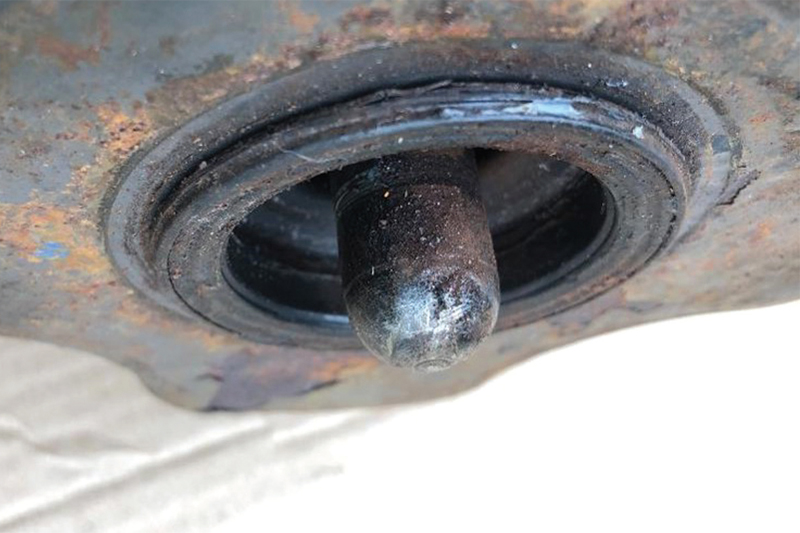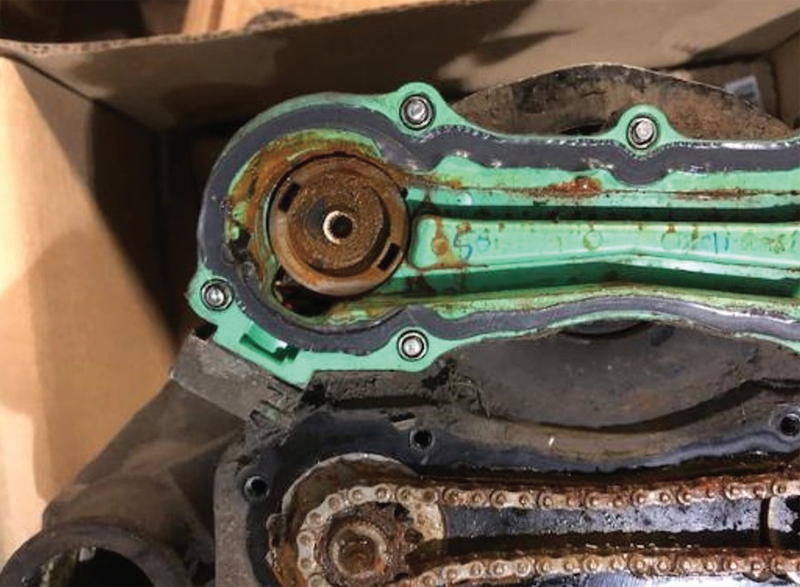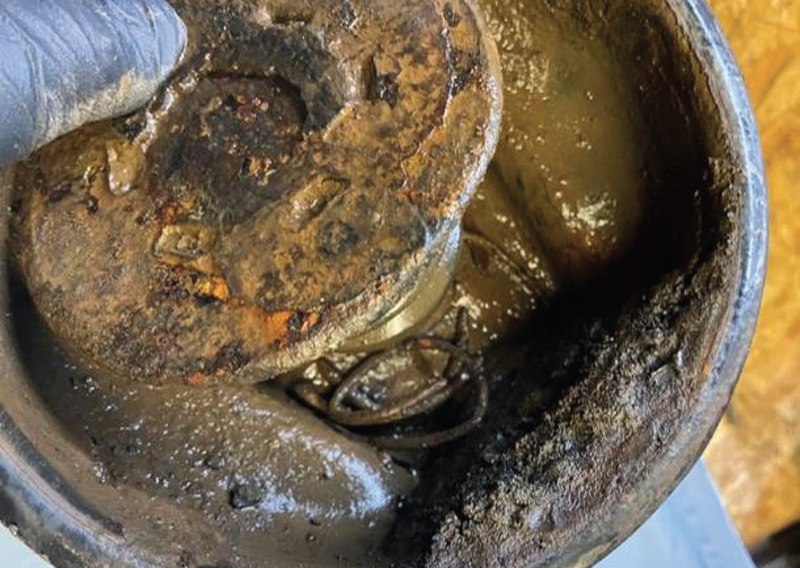
Water ingress is the enemy of any braking system, but often goes undiagnosed. MEI Brakes has some tips on spotting signs of potential trouble.
The brake caliper and air chamber are a system: a caliper is only as good as the air chamber. Air chamber life is often less than the caliper and it needs to be replaced regularly – typically every three years, or according to manufacturer recommendations. MEI analysis of warranty claims in Europe reveals that the highest cause of brake failure is water ingress in the air chamber. So, when brake problems are reported, it pays to check that the fault has not occurred because of air chamber damage.
Diagnosing air chamber damage
It takes just 1mm or 2mm of water to cause corrosion damage to a brake caliper and, in many cases, water gets into the brake via the air chamber. How? Air chambers have a pressure side and non-pressure side, and the non-pressure side (closest to the caliper) must be vented to atmosphere.

On a drum brake, the pushrod is detached from the internals of the brake, so water ingress is not an issue, but on an air disc brake, the pushrod must be fully sealed against the non-pressure side of the air chamber to keep water out of the brake.
If this seal is damaged or ineffective, corrosion will permanently damage the brake either very quickly or over time.
Pushrod and inner boot should always be completely clean and dry – if not, the chamber must be replaced. When you take off the air chamber, a telltale sign that the push rod seal/boot has split, or is not sealing correctly, is when water and rust staining is present on the pushrod. Alternatively, water tracks on the pushrod are a sign that the air chamber must be replaced, otherwise the caliper will fail. A split purshrod will result in corroded caliper internals.
The air chamber face seal is important, and it’s relatively easy to check if it is okay or not. The seal height should be at least 3mm. Also, remember that the front chamber of an air chamber is open to atmosphere and internal parts can corrode. The internal push rod seal is very important for keeping water out, but can be difficult to check if it is okay or not – a good torch helps!

Water ingress and moisture can cause an electrical fault with the wear sensor. This triggers an error message within the EBS modulator and the warning light comes on in the cab. If the driver reports the brake warning light coming on intermittently, this could also be due to water in the electric sensor.

A report of brakes on/drag can be down to corrosion on the lever or lever bearings. This results in the lever not returning to the home position.
On the release of the brake, the air/water/road dirt is being sucked into the air chamber through the vent holes. Over a period of time, the road dirt closes the hole in the bottom of the shell. The air chamber is still breathing and sucking in the environment/water on the brake off stroke and then sits at the bottom of the chamber.
The spring sits in water, so the spring starts to rust. When the spring is heavily rusted/corroded, it will break and the spring punctures the rubber boot. On the very next brake application after the spring has broken, all the water inside the chamber gets pushed into the caliper. This causes the caliper to fail.

The important preventative thing to do is to keep the holes clear. Use a 6mm drill bit on blocked holes. Failure to keep those holes clear can result in the sort of damage seen here. This is a three-year old air chamber, where the bottom hole is completely blocked resulting in the return spring cording and breaking.








